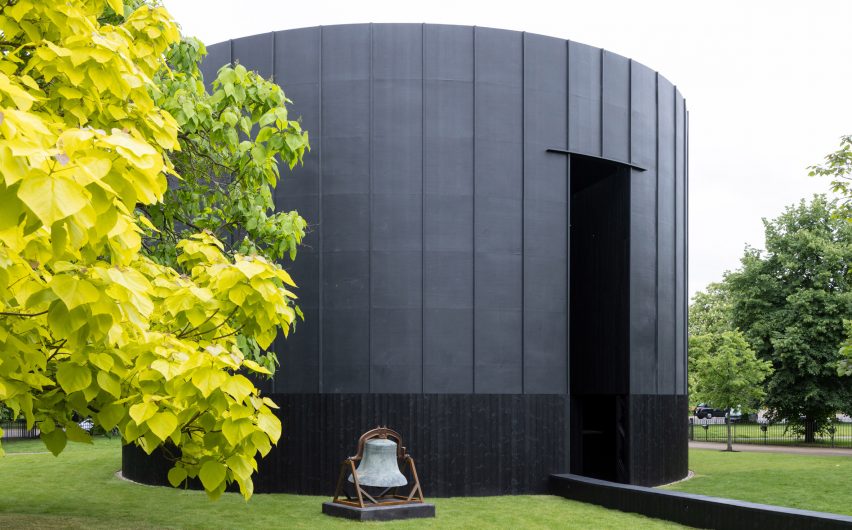
Theaster Gates creates Black Chapel Serpentine Pavilion as "a space of deep reflection"
Chicago artist Theaster Gates has unveiled the cylindrical Black Chapel as this year's Serpentine Pavilion in London's Kensington Gardens.
Realised with the architecture studio Adjaye Associates, the chapel-like structure topped with an oculus was designed by Gates to be a peaceful space within the London park.
"Black Chapel suggests that in these times there could be a space where one could rest from the pressures of the day and spend time in quietude," said Gates.
"I have always wanted to build spaces that consider the power of sound and music as a healing mechanism and emotive force that allows people to enter a space of deep reflection and deep participation."
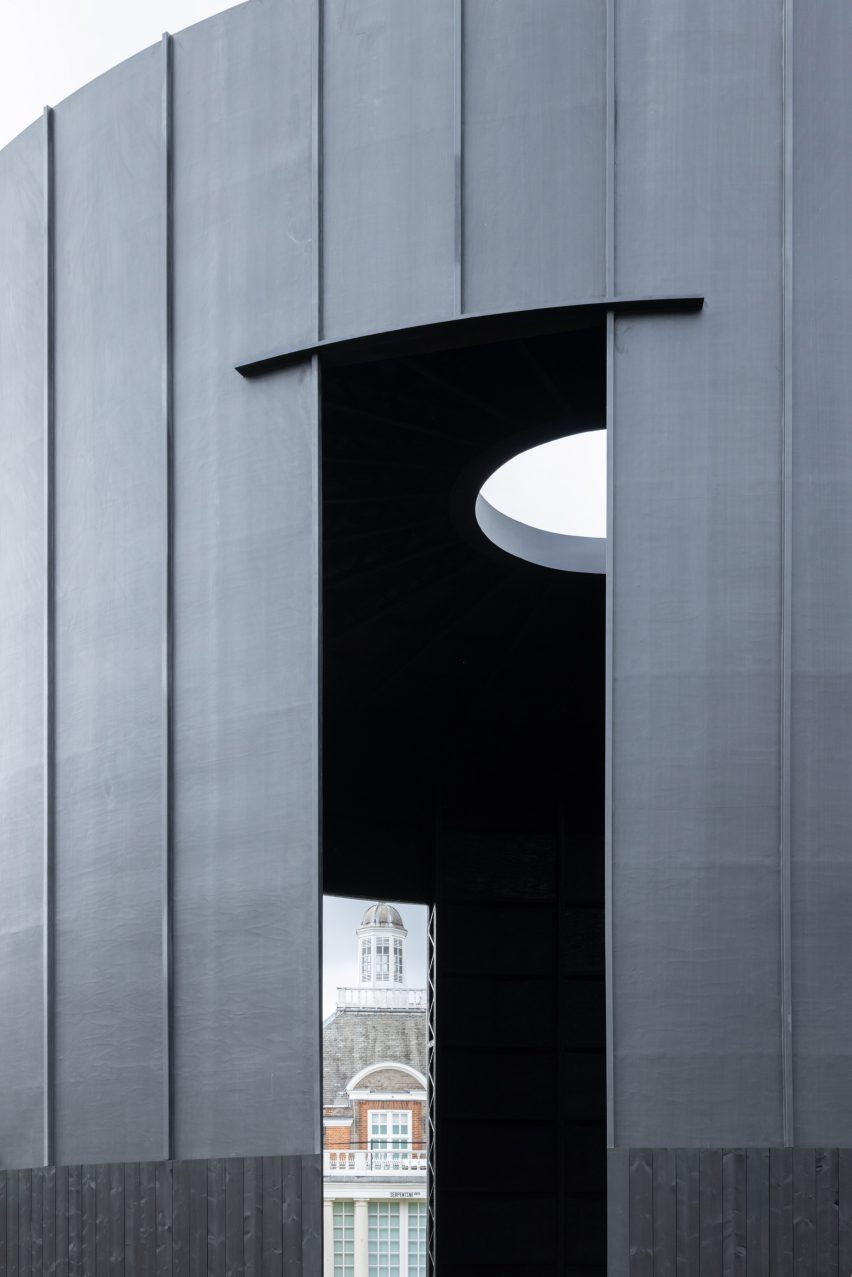
With a diameter of 16 metres and a height of 10.7 metres, the 201-square-metre cylindrical building is the largest Serpentine Pavilion to date.
Its form references religious structures including Bramante's 16th-century Tempietto in Rome, as well as industrial structures including the bottle kilns in the English city of Stoke-on-Trent in England.
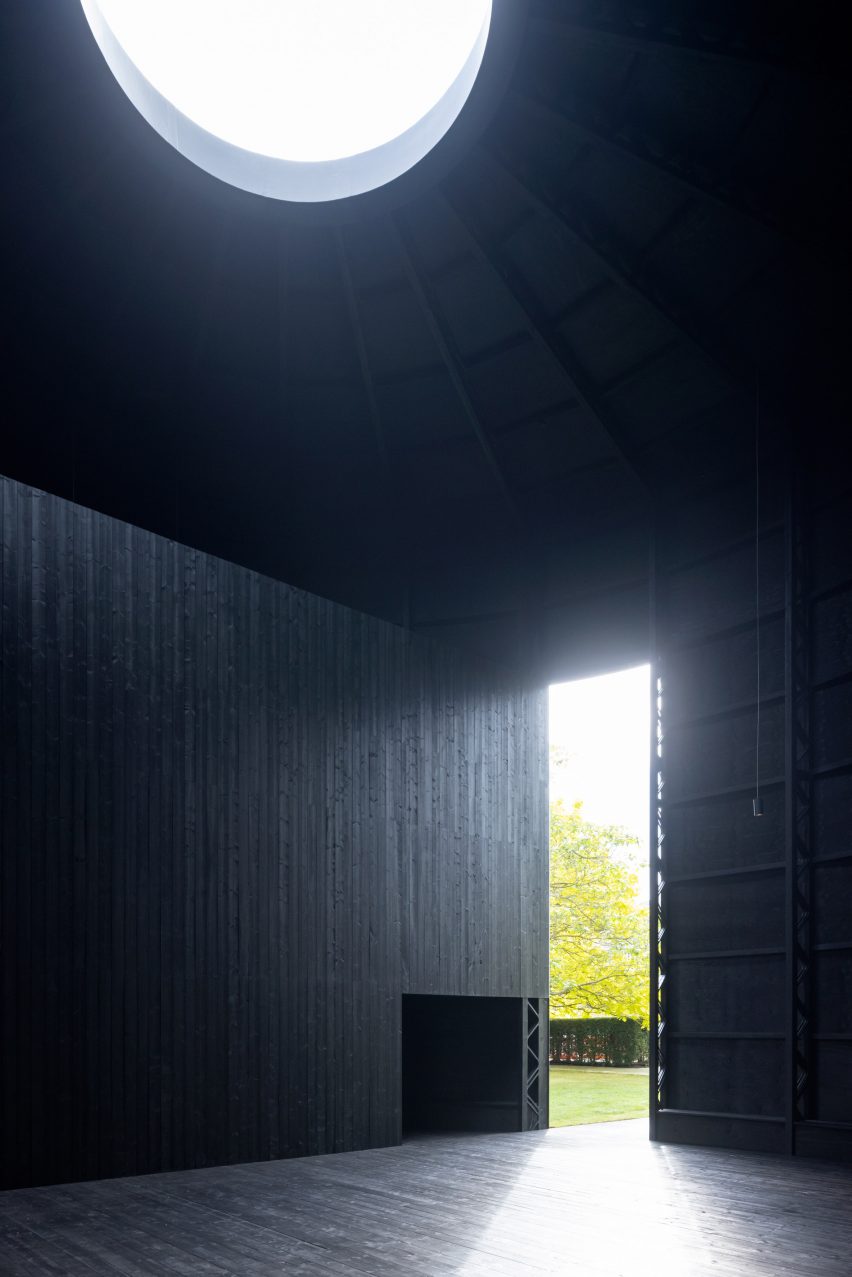
"The design of my pavilion, Black Chapel, has its origins in the great kilns of Stoke-on-Trent," said Gates.
"The concept pays homage to the craft and manufacturing traditions of England and acknowledges these architectural structures, made for the purpose of producing bricks, tiles and ceramic wares," he continued.
"The kilns themselves are also amazing empty vessels that can produce the energy and acoustics of a sacred space or chapel through their sound chamber and their condensed volumes."
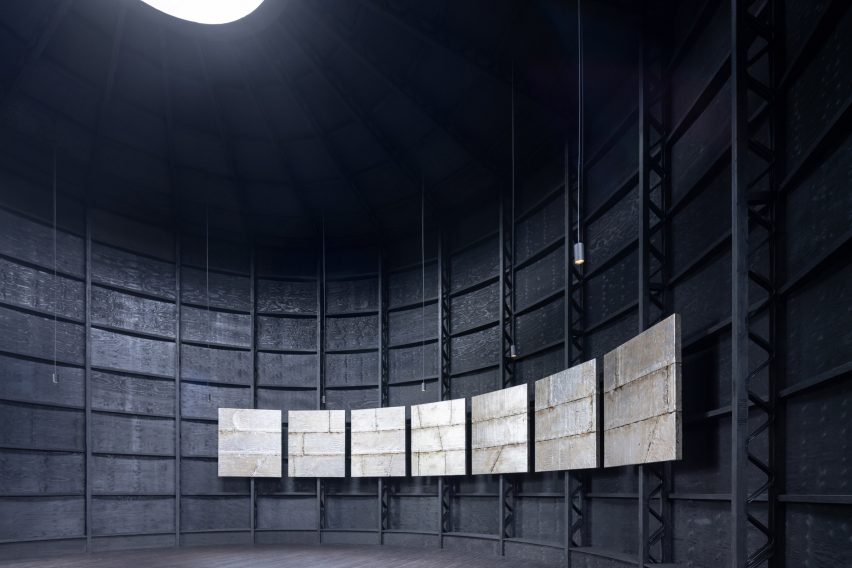
The tall cylindrical pavilion was constructed largely from blackened timber joists with a plywood skin topped with a spoke wheel timber and steel hybrid roof.
It is fully demountable and, similarly to last year's pavilion, has been purchased by Therme Group. It will be relocated after the summer installation.
A bronze bell salvaged from the St Laurence Church in Chicago's South Side, which was demolished in 2014, was placed next to the pavilion's entrance to further evoke a spiritual connection.
"The pavilion is a space of posts and beams, made from wood, that has both the performative and meditative quality of a small chapel," explained Gates.
"We decided on the materials of my paintings: adhered rubber roofing material, stained modular wood," he said.
"We are also giving new meaning to the sacred and the sonic with a bell from the now-gone St Laurence Cathedral Church in Chicago."
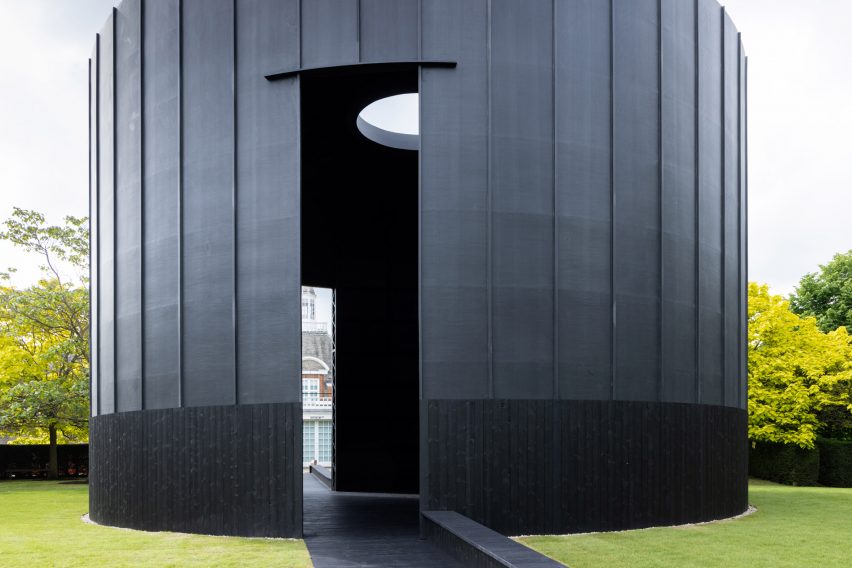
Hanging from the walls within the tall circular pavilion is a series of seven paintings made from tar specifically for the space.
The central space will be used to host a varied program of events during the summer including experimental music performances, clay workshops, Japanese tea ceremonies, "sonic interventions" and panel discussions.
Gates hopes that the pavilion will encourage visitors to investigate sacred spaces in their communities.
"I want visitors to feel inspired to visit small chapels in London and around the world," he said.
"I hope people who never think about architecture or sacred space would reconsider both and consider the built environment and unbuilt environment in new ways."
Gates' building is the 20th Serpentine Pavilion to be built since Zaha Hadid created the first in the series in 2000. Since then, pavilions have been built by numerous architects including Frida Escobedo, Bjarke Ingels and Sou Fujimoto.
The photography is by Iwan Baan.
Dezeen is on WeChat!
Click here to read the Chinese version of this article on Dezeen's official WeChat account, where we publish daily architecture and design news and projects in Simplified Chinese.